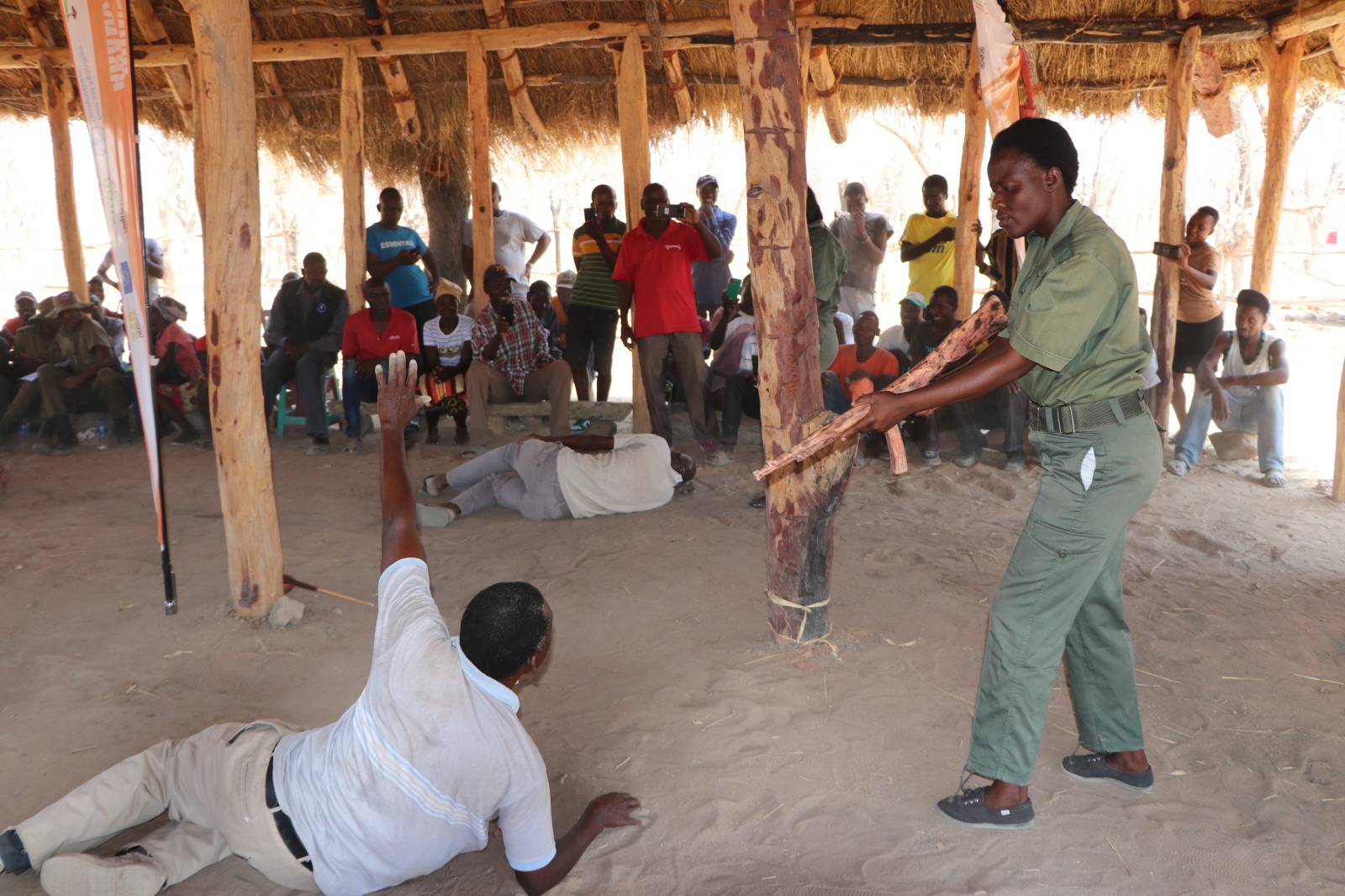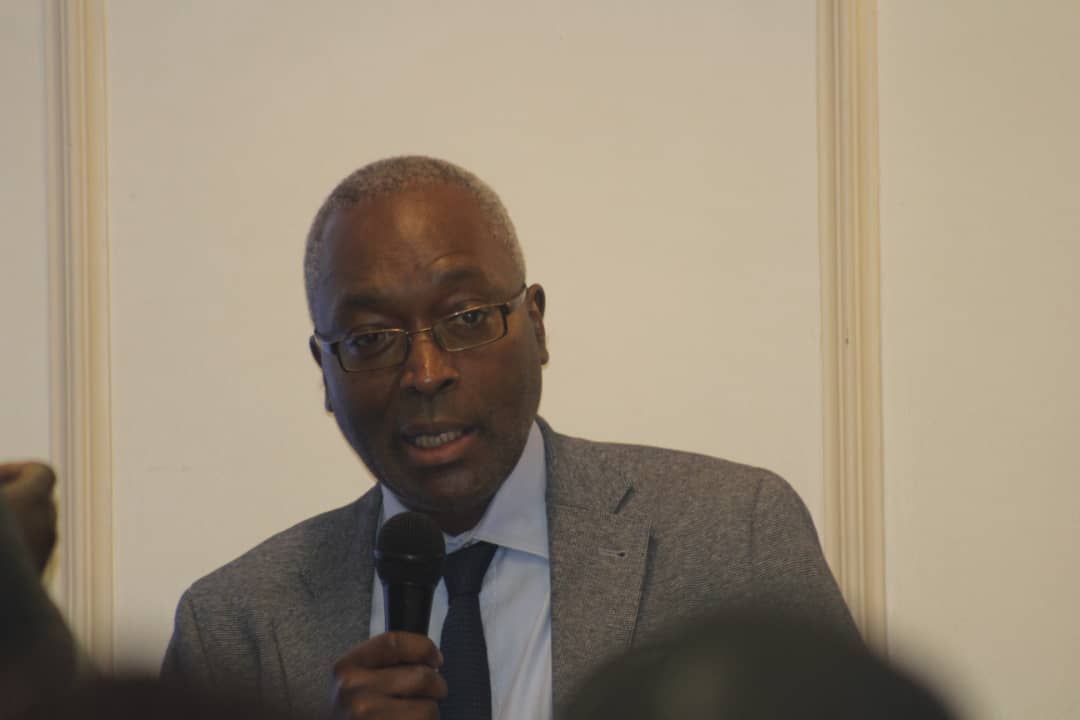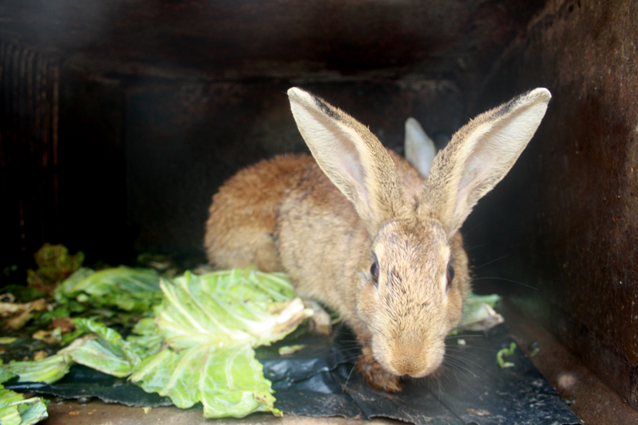Promoting peace between humans, wildlife via theatre
Share

By Johnson Siamachira
Harare(New Ziana) – Where others have been preaching
environmental conservation, a sustainable wildlife management program in Binga district in northwestern Zimbabwe has been practising it.
One of the approaches used by the program to educate communities on
human-wildlife conflict is community theatre.
Established in 2018, the Sustainable Wildlife Management (SWM) program
has sought to create a brighter future for people and wildlife, and
peace between them in their conflict over scarce land.
Much of Binga district falls within the Zimbabwean agro-ecological
classification of Natural Region V-described as unsuited to any
agricultural use except extensive grazing.
With its aim to promote good natural resources utilization, including
wildlife, as an economic and sustainable land-use option, the wildlife
management initiative operates on the basic philosophy of returning the
management of wildlife and other natural resources, to the local
inhabitants.
The SWM program is funded by the European Union and implemented by a
consortium of partners including the Food and Agriculture Organization
of the United Nations (FAO), the French Agricultural Research Centre for
International Development (CIRAD), the Center for International Forestry
Research and World Agroforestry (CIFOR-ICRAF) and the Wildlife
Conservation Society (WCS). CIRAD is implementing the initiative in
Zimbabwe with the support of the Zimbabwe government and Binga Rural
District Council.
The effort in Zimbabwe aims to encourage the establishment of community
conservancies for better land-use planning and wildlife management. The
initiative collaborates with traditional chiefs, local communities, and
government officials to implement affordable and appropriate solutions
to protect livestock and crops, from wild animals.
By involving local people in the management of their wildlife and other
natural resources using drama, the program is promoting communities’
behaviour change by co-existing with wild animals. These communities are
learning to have a symbiosis with wildlife and value it as an economic
resource to be guarded for posterity.
The success of using drama is particularly visible in wards 3, 4 and 5
where development projects are identified with the program. Since it
started operating in the district, the SWM programme established
projects to protect people, crops and livestock, from predators.
Rural areas in arid marginal areas, where wildlife management makes more
economic and environmental sense than crop farming, are turning to
wildlife as a source of income.
To help local people understand better the value of wildlife, the SWM
program works with a theatre group,Intembawuzyo Arts Production. The
group produces plays with conservation key messages played in the local
Tonga language. This has helped to bolster information dissemination as
some local people still have challenges communicating in English.
“It is great to perform and spread human-wildlife conflict messages to
our fellow community members. The messages are relevant since we are all
affected by the same challenges of human-wildlife conflict”, said Alex
Moombe, one of the theatre members.
The plays are based on the communities’ real-life situations, and
combine humour, music, dance, and dialogue to deliver vital themes,
lessons learned and experiences gained, in community-based natural
resources management.
Increased knowledge and awareness of human-wildlife conflict and its
effects on both humans and wildlife have been observed.
Additionally, there has been an increase in the use of preventive
measures to reduce human-wildlife conflict, such as the use of mobile
bomas to house livestock, guarding, deterrent, and early warning
systems. With fewer hyena and other wildlife attacks on their livestock,
the residents can now afford to sell their domestic animals for cash,
allowing them to pay for their families’ food needs, school fees, and
medicine.
Perhaps one of the major achievements of the sustainable wildlife
management project on the community members’ is behaviour change – some
have been transformed from poachers to conservationists.
Says Blessing Nkomo of Kabozo Village, in Ward 3: “I used to be a
menacing poacher. I believed that wild animals were destined for the pot
or sold to other villagers as bush meat. But there came a point when I
had to stop. The messages portrayed by the theatre group, are true.
Poaching is bad for my community at large, and for children
specifically,” he said in a remorseful voice.
Theatrical efforts also demonstrate how culture and art may be used to
promote social and behavioural change. The SWM program has reached out
to over 500 community members through theatre.
Maxwell Phiri, the SWM program site coordinator for Zimbabwe, expects
that more messages on human-wildlife conflict will be shared with
communities and that the local theatre group will continue to spread the
messages until communities can co-exist with wildlife.
More focus on human behaviour is required for long-term human-wildlife
co-existence, says Phiri.
“It is critical to educate communities about human-wildlife conflict and
how it might be avoided, or reduced. However, the extent to which these
interventions have an impact is determined by the primary audience being
motivated,” Phiri explained.
But as the Binga Rural District Council natural resources officer,
Chawulani Munsaka said, “In the past, people used to stand by and watch,
or even provide shelter to poachers.”
But things have changed dramatically since then. This has been credited to the SWM program and the Binga Rural District Council’s deployment of community resource monitors, who are the foot soldiers in charge of patrolling,removing
snares, and raising awareness about natural resource management issues.
Any suspected poaching incidents are now being reported to the relevant
authority such as the traditional leadership, police, BRDC and the
Zimbabwe Parks and Wildlife Management Authority.
“Poaching has decreased since most individuals have become environmental stewards,” said Munsaka.
While the programme has made great strides, it still has a long way to
go in finding effective means of controlling intruding animals.
“We receive many complaints of animals devastating crops and even killing
people but resources limit us from attending to all requests promptly.
We only have 18 resource monitors who were trained by the program, in
the implementing wards who have to walk, at times, for over 10km,’’
Munsaka adds.
People had become very bitter and disheartened with problem elephants,
to an extent of preferring to use harmful means to deter the herds.
“We are not in support of communities using harmful means to deter
elephants,” said Mthokozisi Dlodlo, SWM program wildlife officer.
“But it highlights the urgent need to find effective methods to keep the
elephants out of people’s fields like the chili fences introduced by the
SWM Program.”
“While Zimbabwe supports international efforts to put a halt to the
extermination of certain animals, like elephant, we need to promote
economic activities that reduce reliance on wild species,” said Phiri.
A lot of wildlife is already protected from consumptive use in large
areas set aside as national parks in Africa.
In Southern Africa, for example, this amounts to 10 per cent of total
land. The critical issue is how to maintain wild land and viable
populations of large and often dangerous wild animals such as elephant,
hyena and lion on what is essentially farming land outside protected
areas.
In this context, Phiri believes that atttaching economic value to
wildlife is vital.
“If a farmer cannot use the wildlife to best advantage, he/she will turn the land to other uses such as crop
production and cattle ranching, threatening the very existence of wild
animals,” Phiri says.
New Ziana









